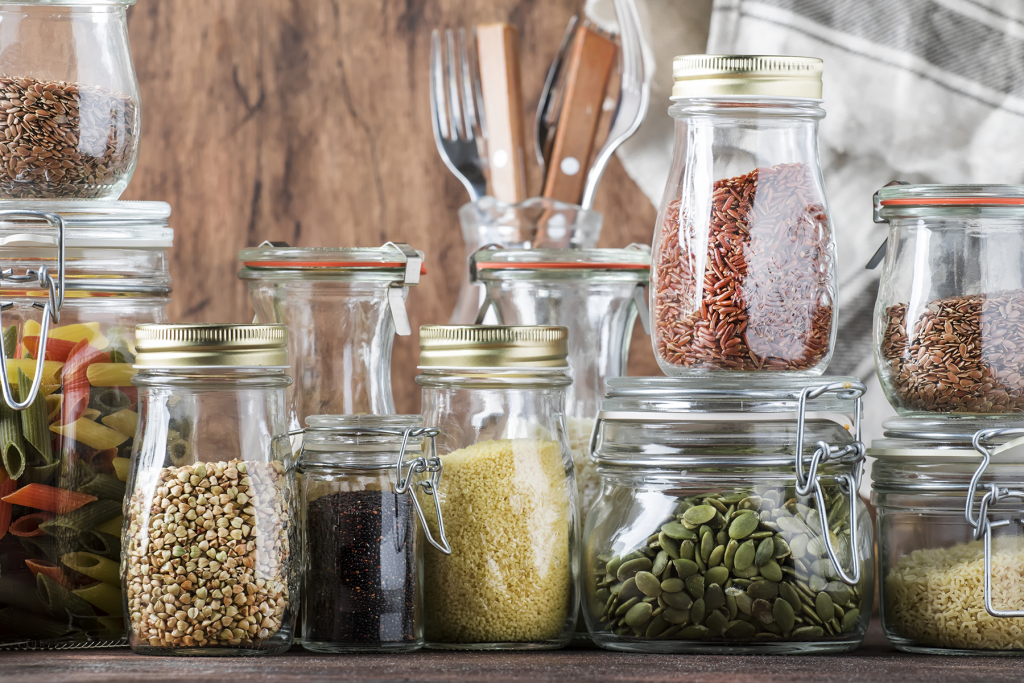With the time, effort, and money you put into having a well-stocked pantry, you will want to make every effort you can to protect it. More than ever, people have to rely on their “pandemic” pantry to bulk out their day-to-day meals, making the need to preserve and store your goods long-term that much more critical.
Long-Term Food Storage
There are few things more disappointing than seeing the food you’ve squirreled away for a rainy day ruined by the natural elements or, even worse, bugs. By knowing what your food’s worst enemies are and understanding how they can infiltrate your food will allow you to take steps to prevent them from wreaking their havoc on your supply.
When everything from sunlight and moisture to bugs and bacteria can damage your food, planning to store long-term foodstuffs, such as rice, dry milk, beans, or sugar, you will want to consider repackaging them to more food-safe containers than those they often come in. In North America, most companies package their dry goods in packaging that is more suitable for short-term use, meaning those goods likely will not hold up during their long-term storage. While the USDA allows for certain food defects in our food sources, it’s ideal for preventing them as best you can at all costs.
Here are five easy-to-follow steps for useful food storage that can be used alone or combined, creating a multi-barrier approach, which provides even better food security.
Polyester Film Food Liners
Polyester film food liners, such as Mylar bags, are another option for storing your dry goods for the long haul. While not a 100% barrier to potential oxygen and bug contamination, adding a thin film liner will ensure you have multiple barriers to protect your food. There are thicker grades of plastic worth investing in if dedicated long-term storage is the goal with this lifestyle change because while costlier, they can last up to 20 years.
Food-Grade 5-Gallon Buckets
Simple Food-grade 5-gallon buckets are among the most popular storage device for those who store large bulk quantities of food. Typically, a food-grade container has the number “2” stamped inside the recycling symbol or the acronym “HDPE” stamped below it. Be sure to clean any storage container with warm soapy water and dry it thoroughly before placing any food inside. Spill-proof lids are super important too, and caps with gaskets and gamma lids are both excellent choices because they don’t require a lid opener.
Desiccant Packets
Desiccant packets are a decades-old technology used to moderate the moisture level within a container. While highly effective, it is essential to know that desiccant is highly inedible, and if in any way exposed to your stored food outside of it’s packet protection, the entire food item will need to be thrown out. Also, note that you should not use desiccant with certain food items, such as flour, sugar, and salt, as these items need a certain amount of moisture to stay edible and not turn into a hard brick.
Oxygen Absorbers
Oxygen absorbers, which begin working the moment they’re exposed to oxygen, start working efficiently when you open the package. They can come in assorted sizes and are typically expected to add 2,000 ccs of oxygen absorbers to one 5-gallon bucket. While non-toxic and won’t change your food’s taste or smell, oxygen absorbers are not edible.
Food-grade diatomaceous earth provides a natural and sustainable approach to long-term food storage. Diatomaceous earth is made from the fossilized remains of tiny, aquatic organisms called diatoms. It’s organic and safe to use around food, pets, and children. It will act as an insect and pest repellent, in addition to being a desiccating agent. Sprinkling DE around your food storage containers and in crucial entry points to your storage room creates a significant force field around your goods.
Diatomaceous Earth is used as natural pest control
Diatomaceous Earth is used as natural pest control in empty grain silos and storage bins. It can also manage insects on plants, deodorize cat litter, and kill external parasites.
Please Note: Diatomaceous earth can be harmful to beneficial insects like honey bees. Please use it with caution. Only food-grade diatomaceous earth should be used as an insecticide and in animal feed. Food grade diatomaceous earth meets stringent regulations in terms of crystalline silica and heavy metal content, making it safe for animals to consume.
If you would like to purchase Diatomaceous Earth to aid in your long-term food storage endeavors, Absorbent Products has several food-grade Diatomaceous Earth products that are available across North America, as well as specially formulated consumer products for the rest of your home or farm.



